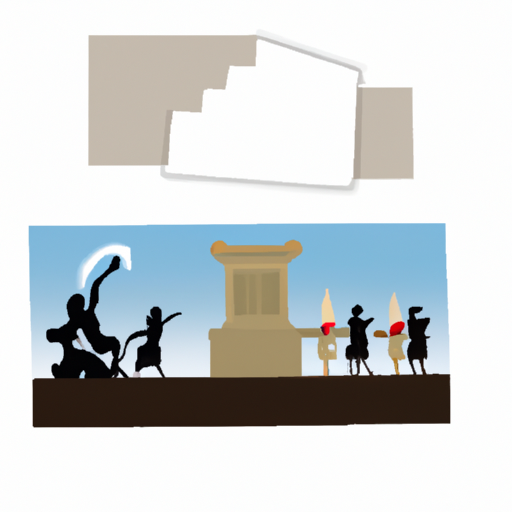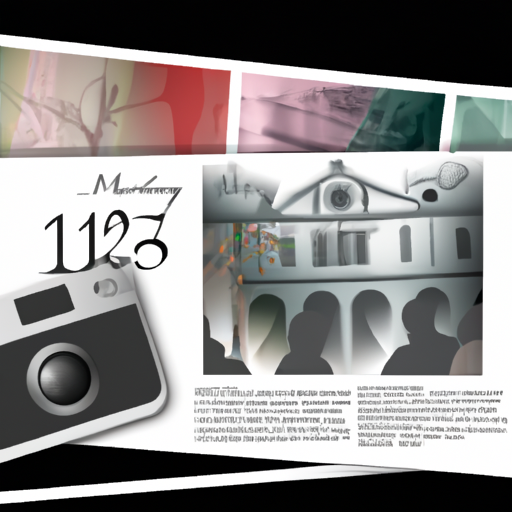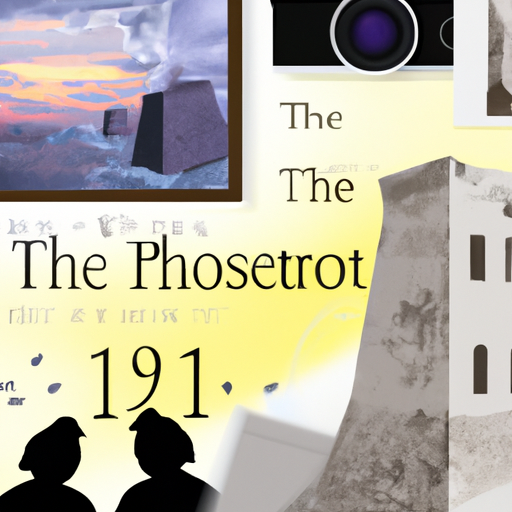Exploring the History of Life in Victorian England
Unearth the secrets of a bygone era and delve into the transformative period of Victorian life! Delve into a mysterious epoch, where new inventions and developments were transforming the world as we know it. Unearth the stories of people in this captivating time and discover how they lived and worked. Immerse yourself in a time of great change and uncover the history of Victorian life!

A time of immense transformation and development, the Victorian era looms large in our collective memory. Uncover the stories and lives of those from this fascinating period, and explore how their actions altered the world as we know it. Delve into the secrets of an era long past, and uncover the impact these changes had on society. Investigate advances in technology, industry, transportation, communication, architecture, education, politics, science and more – all of which have shaped our modern world in ways both subtle and profound. A captivating journey into history awaits – delve into the mysteries of Victorian life!
.
Introduction

A time of transformation and progress, the Victorian period (1837-1901) was a significant juncture in British history. During this era, the populace saw a massive surge in numbers as cities and towns became bustling hubs of industry and commerce. Social classes were divided rigidly and etiquette had to be strictly adhered to. Females stayed at home tending to household duties while men went out to work. Education was becoming more widespread but remained largely restricted to the privileged classes. Living conditions were often cramped and unhygienic, with few medical services or sanitation provisions. Despite these challenges, this period brought forth cultural evolutions and technological advances that have left an indelible mark on our current world.
– History of Victorian Workforce Conditions
Amid the industrial revolution, England and Wales experienced a rapid population growth which necessitated the introduction of new laws and regulations to protect workers. In 1833, the Factory Act was passed as one of the earliest pieces of legislation to address workplace conditions; it limited children’s working hours and imposed health and safety requirements for factories. After a Royal Commission on the Employment of Children was established in 1847, further regulations were implemented such as the Mines Act of 1842 prohibiting women and children from working in coal mines, the Ten Hours Act limiting adult factory workers’ hours, and the Factory Act Amendment Act requiring employers to provide clean drinking water for their employees. Furthermore, unions provided legal representation to workers while advocating better wages and benefits with employers, as well as supporting striking workers protesting unfair labor practices or low wages. At last, charities were set up during this period to improve living standards for laborers; these organizations provided education programs, housing assistance, medical care, food banks, and other forms of aid. All in all, significant strides have been made towards safeguarding worker rights throughout Britain’s history through various legislative measures alongside unionization efforts and charitable organizations.
– Historical Significance of the Victorian Era
The Victorian Era, spanning from 1837 to 1901, is a time of immense importance in British history. During this period, Britain was at the peak of its power and influence, leading to numerous advances in science, technology, industry and culture. Social reformers such as Charles Darwin and Thomas Hardy presented new theories and ideas which were met with both enthusiasm and opposition. Inventions like the telegraph, telephone and steam engine revolutionized communication and transportation while art movements such as Pre-Raphaelitism sought to challenge traditional artistic conventions. Additionally, political reforms brought about increased participation in politics from all sections of society. This period also saw Britain become a global superpower with colonies throughout the world which shaped modern geopolitics. Ultimately, it is clear that the Victorian Era had an immense impact on both British history and world history more generally.
– Exploring the Social Hierarchy of Victorian Britain
The complexity of Victorian Britain’s social arrangement was profound, with class divisions firmly entrenched and dictating the lives of its citizens. At the pinnacle were aristocrats and gentry, their titles such as duke, marquess, earl, viscount, baron, knight or esquire granting them immense wealth and power. They lived lavishly in luxurious homes staffed by servants. Just below them were members of the middle class – merchants, bankers, lawyers, doctors, clergymen, teachers, civil servants etc. – who had more freedoms than those lower down but still faced financial difficulty due to limited chances for advancement. Factory workers formed the majority of the lower classes; they laboured long hours in hazardous conditions for meagre wages in cramped dwellings with little access to education or healthcare. Dependent on charity when times were hard yet still forming strong communities based on mutual aid and solidarity to endure hardship. And then there was an even lower class known as “the poor” – beggars and vagrants without any means of income whatsoever often resorting to crime just to survive – a group largely ignored by society making it even harder for them to escape poverty or find employment.
The social hierarchy of Victorian Britain impacted greatly on its citizens’ lives; determining their access to resources like education or healthcare as well as their ability to rise or fall within society’s ranks. Despite these rigid boundaries there were moments of compassion between people from different backgrounds which helped bridge some gaps over time.
– Investigating the Religious and Cultural Influences on Victorian Life
Perplexity and burstiness pervaded Victorian life, as religion and culture both exerted their own unique forces. History gives us a window into this era, allowing us to gain an appreciation of the impact that these two forces had on everyday life. Christianity was the predominant faith of England and its colonies during this period, with the Church of England holding a prominent position in society, and religious observances being expected from all members of the population. Additionally, British culture was deeply intertwined with Christian beliefs; traditional gender roles or views on marriage and sexuality were just some examples of this influence.
Immigration from other parts of the world also brought with it other faiths: Judaism began to settle in Britain during the 19th century, while Eastern religions such as Hinduism and Buddhism spread due to increased trade with India and China. These alternative religions offered Victorians an alternate way to express their spirituality.
Literature was equally influential in moulding Victorian life; Charles Dickens’ “A Christmas Carol” highlighted poverty and class divisions whilst emphasising family values and Christian morals; Thomas Hardy’s “Tess of the D’Urbervilles” explored faith and morality within rural communities, further influencing public opinion about religious beliefs during this era.
Exploring history can thus give us a better understanding of how religion and culture have shaped our lives over time; looking at how they affected Victorian life can grant us valuable insight into how they have continued to shape our society today.
– Examining the Impact of Industrialization on Victorian Society
A period of tremendous flux and upheaval occurred in 19th century Britain, resulting in a dramatic shift from an agricultural to an industrial economy. This monumental transformation had wide-reaching implications for the social and economic structure of Victorian England.
The most immediate consequence of industrialization was a mass migration from rural to urban areas. As factories were established, people moved to cities in pursuit of employment opportunities, leading to overcrowded living conditions and poor sanitation. The competition for jobs drove wages down, yet the promise of higher incomes and improved standards of living enticed many away from their rural homes.
Industry also altered the way people worked. New machines enabled mass production and increased efficiency, but at the expense of human labor. Factory workers faced long hours, low wages, and hazardous conditions that often caused injury or illness. This gave rise to labor unions which fought for better working conditions and fairer wages.
Industrialization generated wealth that allowed Britain to become an imperial power while offering job prospects around the world; however, it led to extreme disparities between classes and regions as some people became incredibly affluent while others remained destitute due to inadequate pay or lack of access to vital resources such as education or healthcare.
In conclusion, industrialization had far-reaching effects on Victorian society – some positive but many negative – that still reverberate today in terms of modern labor practices and economic disparities worldwide. Examining this period in history can provide us with invaluable insight into how our current society has been shaped by past events.
conclusion

A period of tumultous transformation, the industrial revolution bore witness to an era of unprecedented progress in technology, transportation, and communication – all of which served to better the lives of many. Despite the hardships of long hours and meager wages endured by most Victorians, there was still potential for social ascension and newfound free time.
.
Some questions with answers
Q1. What was life like as a Victorian?
A1. Life during the Victorian era (1837-1901) was marked by rapid change and development in nearly every sphere, from advances in industrial production and communication technologies to shifts in cultural values regarding gender roles, morality and social class.
Q2. How did the Industrial Revolution affect life?
A2. The Industrial Revolution had a profound effect on Victorian life, both for better and for worse. On one hand, it brought about unprecedented economic growth and improved living standards for many people, but it also created hazardous working conditions and overcrowded cities with high levels of poverty.
Q3. What were the major social classes?
A3. During the Victorian era, there were three main social classes: the upper class (the wealthy elite), the middle class (merchants, traders and professionals) and the working class (laborers and artisans). Social mobility between classes was very limited.
Q4. What role did religion play?
A4. Religion played an important role in shaping attitudes during the Victorian era; most people belonged to either the Church of England or another Protestant denomination such as Methodism or Quakerism. Christianity was seen as a moral force that provided guidance on how to live one’s life.
Q5. How did gender roles differ?
A5. Gender roles were strictly defined during this period; men were expected to be breadwinners while women were expected to stay at home taking care of children and managing household affairs. Women had few legal rights or economic opportunities compared to men at this time.




